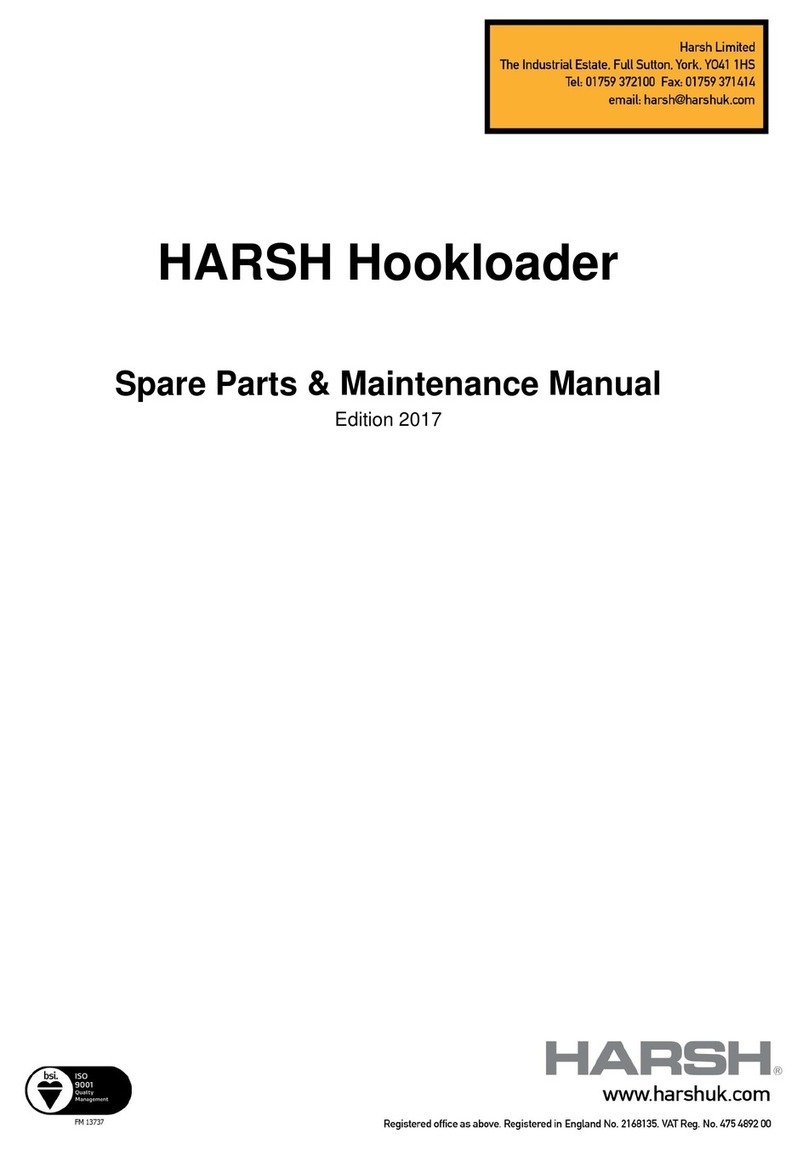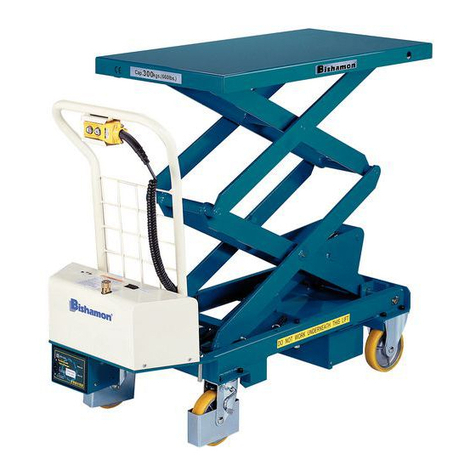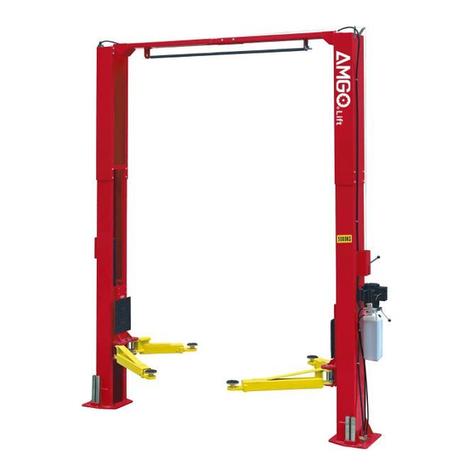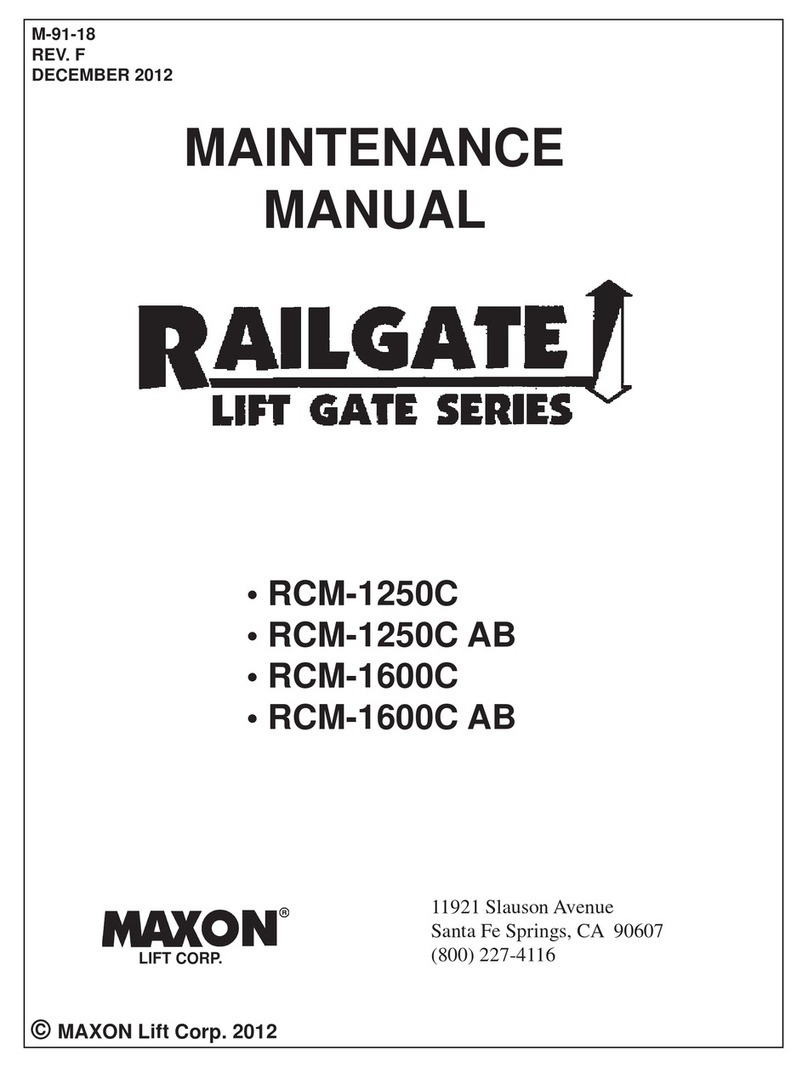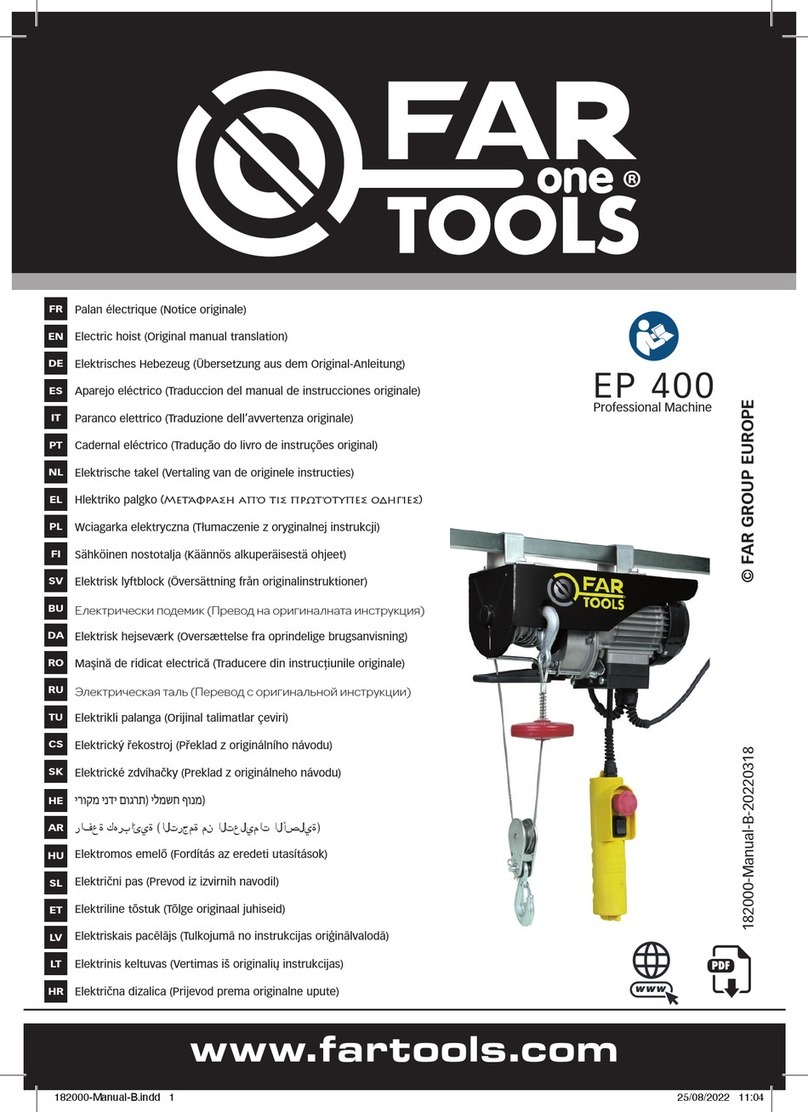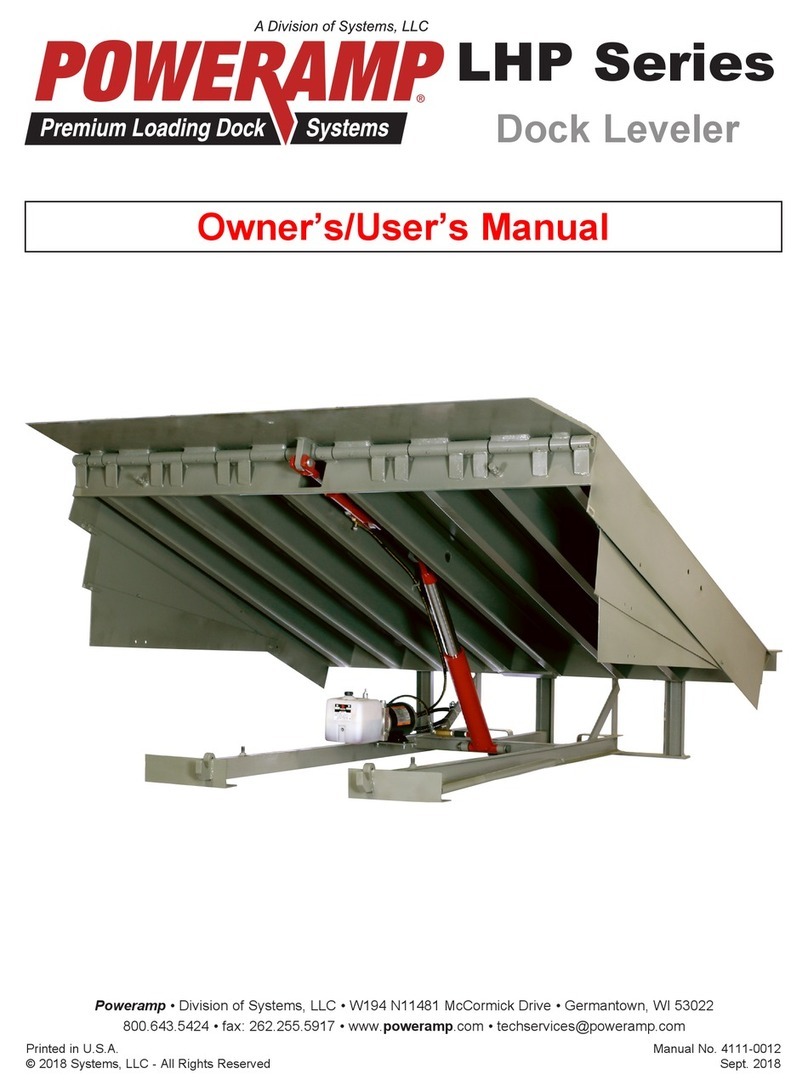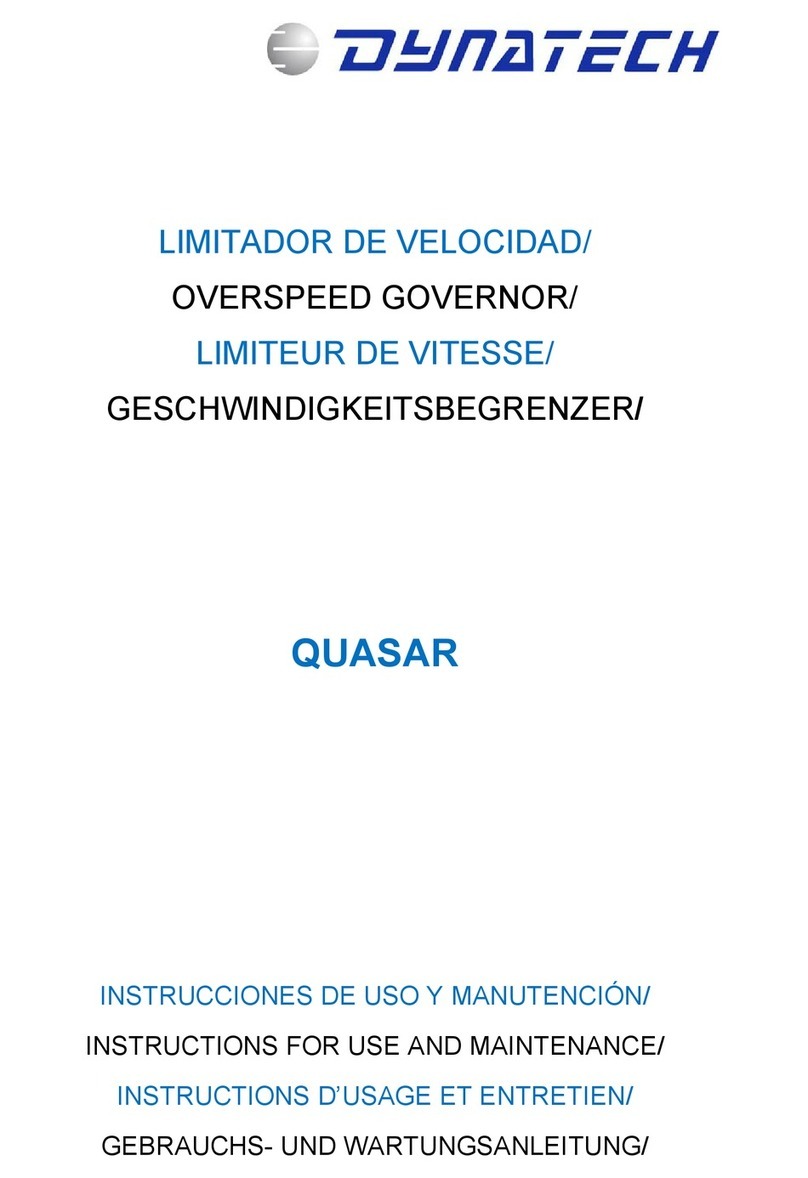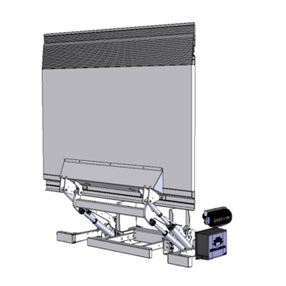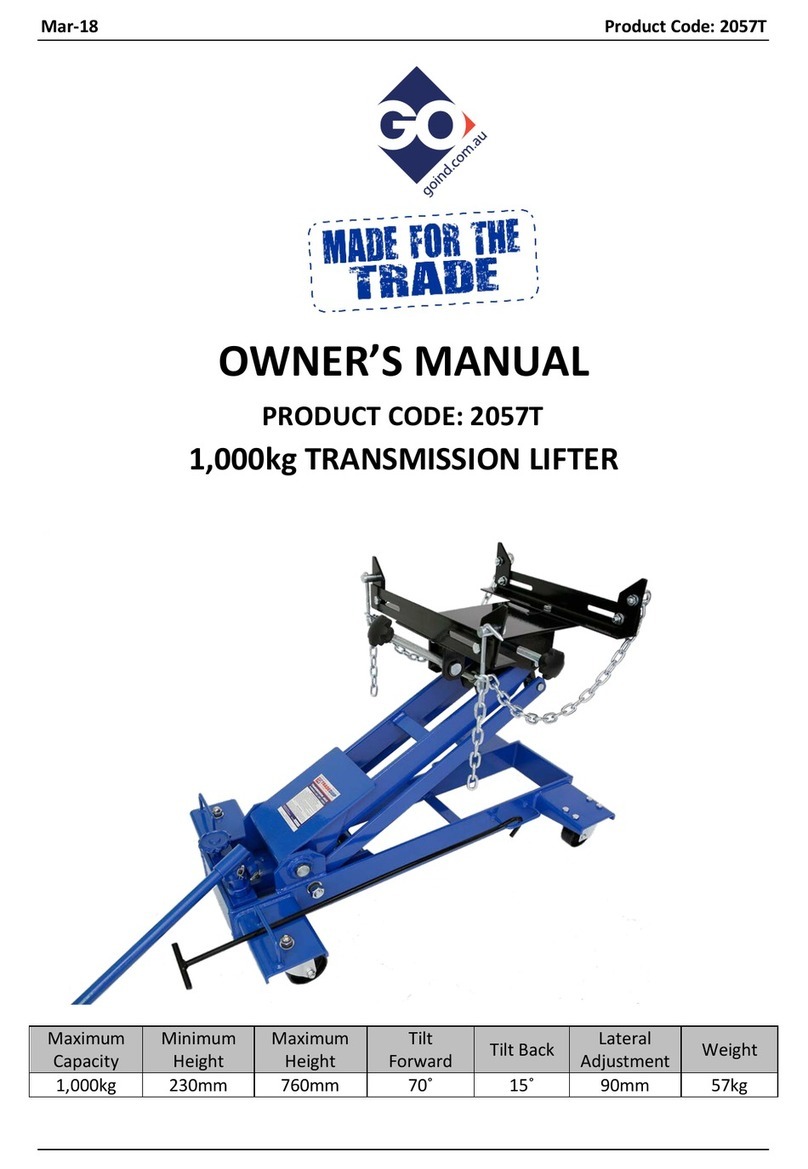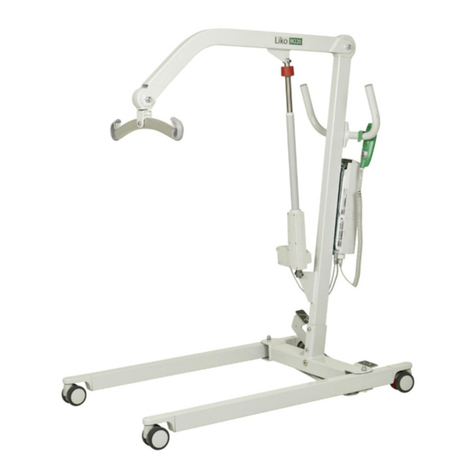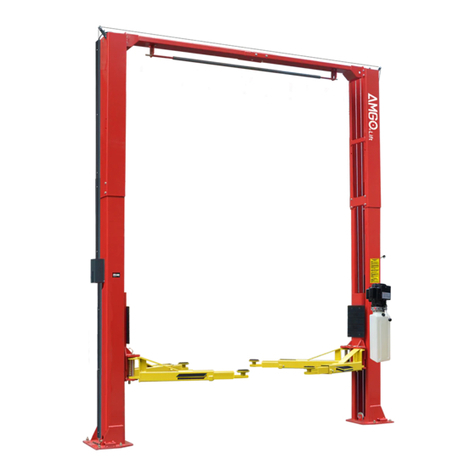Harsh HS10T User manual

HS10T Skiploader
Equipment
Operators Manual
Edition - 2019
This manual is uncontrolled when printed. The Author reserves the right to amend / update the manual at any
time without prior notice. Edition –2019 Issue 1

Index
1.0
Operators Manual Introduction
2.0
Skiploader Equipment Introductions
2.1
Explanation of the Main Skiploader Components
3.0
Installation of the Skiploader Equipment
4.0
Safety Instructions
5.0
Operator’s Equipment
5.1
Operators Workwear
5.2
Operating Area
6.0
Skiploader Operational Procedures
6.1
Control Panel
6.2
Loading Procedure
6.3
Unloading Procedure
6.4
Tipping Procedure
7.0
Risk Assessment / Evaluation of Risks
8.0
Summary of Skiploader Operation
9.0
Maintenance
9.1
Greasing
9.2
General Maintenance Checks
10.0
HITS (Harsh Improved Truck Support)

HS10T Skiploader Equipment
1.0 Operators Manual Introduction
The Operators Manual is a very important element of the Skiploader Equipment and all responsible
people for mounting, maintaining, repairing and operating the equipment must comply with these
dispositions.
The manual must be preserved in the Cab of the Truck for quick availability and in case any persons
requires consultation. In the event of loss, the user must report directly to their superior in order for a
replacement to be issued.
The manual should be used in conjunction with scheduled training and demonstrations on
familiarisation of the equipment use before any user is permitted to operate the Skiploader
equipment independently.
The Skiploader equipment supplier reserves the right to amend and modify this manual without any
obligation to revise or update previous editions.
Once the Skiploader equipment is handed over to the user the Skiploader equipment supplier is
considered free from any responsibility in the following events;
•Improper use of the equipment
•Use of the equipment by untrained or non-qualified personnel
•Installation which does not comply with the mounting instructions
•Non authorised modifications
•Use of original spare / replacement parts
•Partial or non-observation of the operation instructions
•Exceptional unforeseen events
2.0 Skiploader Equipment Introductions
Designed for handling large quantities of bulk waste, the Skiploader equipment can also be referred
to as Chain-Lift equipment and is proven to be an economical solution to industrial, household and
commercial waste companies. Designed to carry containers from 4 cubic yard to 12 cubic yards,
they are used for removing and transporting varying volumes of waste materials. The Skiploader
equipment loads, unloads, transports and tips the containers carrying the waste product. The main
operations are as follows;
•Container loading and unloading from the ground to the chassis and vice-versa
•Container loading and unloading on a trailer
•Container tipping for material unloading

Skiploader equipment is often preferred by operators due to its ability to operate in many
environments due to their smaller size. Part of this versatility is the equipment ability to allow
operation in confined and tight spaces. With an operational speed of approximately 90 seconds to
load or unload a container it is a very practical solution for handling bulk waste products.
Furthermore, complete operation of the Skiploader equipment is carried out inside the vehicle cab, or
from a safe distance, when a radio remote control is specified.
2.1 Explanation of the Main Skiploader Components
Understanding the main components of any Skiploader equipment is important to better appreciate
the functionality and operational requirements of the equipment. A basic level of component
knowledge is extremely useful. It is advised any users should familiarise themselves with the
components when being trained or demonstrated the equipment.
The main structures to note are as follows;
•Independent telescopic arms for added flexibility and versatility
•Hexagonal lifting arms for extra strength with integral telescopic arm cylinders for added
security
•Tipping hooks mounted on solid one piece rear torsion tube for extra strength
•Adjustable bin stops to secure different sized containers quickly and easily
•Bed mounted lateral lifting hydraulic cylinders which are operational when the container is
loaded / unloaded or during tipping
•Hidden access ladder for safe access to Skiploader bed
•Integrated headboard for safety and security

3.0 Installation of the Skiploader Equipment
The Skiploader equipment will be mounted and fixed according to our standard procedures of
practise with consideration taken for the chassis types and variations. Upon confirmation of any
order the technical department will produce mounting installation drawings and guides based on the
equipment selected and truck type. Weight and payload calculations are possible but may vary
dependent upon model/types.
Harsh are ISO9001:2008 compliant and accredited by the British Standard Institute meaning we
have fully audited systems giving us full traceability and process throughout the installation.
Harsh are also accredited member of CHEM. Formed in the 1960’s CHEM provides Co-ordination
and communication across equipment manufacturers to help standardise and provide guidelines on
best practises for health and safety regulation and in drafting any legislation.
Harsh also is ECWVTA (European Community Whole Vehicle Type Approval) approved for
installation of our Hooklift equipment on a wide variation of chassis manufacturers vehicles.
ECWVTA requires all new registered vehicles after October 2014 to come complete with a full CoC
certificate from every stage bodybuilder. Ensuring full traceability, documentation and process is
followed and conforms to legislation.
4.0 Safety Instructions
Before using any Skiploader equipment it is important the Safety Instructions are read, understood
and adhered to at all times without exception.
Environment Checks;
1. It is absolutely forbidden for any persons to be in the equipment acting radius during
operation of the Skiploader. A safe distance between any persons and the equipment must
be adhered to at all times.
2. Always check to ensure the equipment is being operated on a level and secure surface prior
to operation
3. Always check for overhead obstructions such as power lines before use
4. Always check the vehicle surroundings before loading or unloading or tipping of the Container
User Checks;
1. It is forbidden for the equipment to be operated by a non-trained person
2. Operators must ensure they have been instructed on the equipment lifting capacity, utilisation
limits and warning light positions prior to operating
3. Please further consult section 4.0 Operators Equipment for further information
Operational Checks;

1. Always operate the Skiploader equipment safely from the side mounted control valve OR
inside the vehicle, where in-cab controls are fitted OR from a safe working distance, where
radio remote control is supplied. In the event of an emergency, the Operator can easily stop
the equipment working by;
a. Pressing the emergency stop button
b. Releasing the PTO (power take off) Unit
c. Via the Clutch Operation
2. Always ensure the In Cab monitoring system is off prior to driving the vehicle. The monitoring
system inside the Vehicle Cab indicates a number of items used in the loading, unloading and
tipping process with various indicators present. These indicators cover the following;
a. PTO Warning Light –Showing the PTO is engaged and the Skiploader equipment is
Live for operation
b. Warning Light for Tipping –This light indicates the Skiploader main arms are off the
Skiploader bed and raised in the air. Therefore, unsafe to travel until the arm is back
in connection with the truck chassis and the light is off.
c. Stabiliser Legs Warning Light –This indicates whether the stabiliser legs are deployed
on the ground for stabilisation in the loading, unloading and tipping process. The light
must be out before travel.
d. Flashlight–This indicates the system is on/off and should only be flashing when the
Skiploader equipment is being used in the loading, unloading and tipping processes.
5.0 Operators Equipment
5.1 Operators Workwear
Whenever maintaining, operating or cleaning any Hooklift Equipment said persons must ensure they
have all the appropriate equipment and workwear PPE (personal protective equipment). Among
these we recommend the following;
•Safety Helmet
•Non Slipping protective shoes with metallic reinforcement
•Gloves, ear protection and body protection
•Reflective jacket
•Dust mask
•First Aid Box
Always ensure you are complying with your companies Health & Safety procedures and following
any external sites legal safety guidelines prior to leaving the vehicle cab. Look out for the following
symbols.

5.2 Operating Area
Before starting any operation of the Skiploader equipment make yourself sure that the movements of
the equipment do not create dangerous situations to other persons or objects. Always check the
environmental conditions and prepare adequate signals to limit the working area. Among these we
recommend;
•Barriers and/or ribbons to restrict the area
•Fire extinguishers
•Danger signals
•Warning signs for hanging weights
6.0 Skiploader Operational Procedures
The Skiploader equipment is suitable for transporting containers, loading, unloading and tipping of
material out of the containers. The following section explains in detail the procedure for each of
these functions.
6.1 Control Panel
The control panel is located on the off side of the vehicle and looks something like the picture below.
Familiarise yourself with the control panel and its location to understand each lever and its function
prior to any movement or operation.
The controls operate the following manoeuvres;

Lifting of the main cylinders
Extension of the telescopic arms
Extension of the nearside stabiliser leg
Extension of the offside stabiliser leg
Individual telescopic arm selection
Tipping hook operation
Emergency stop button
Prior to any manoeuvre or operation once all safety checks have been carried out and the user is
ready to operate the equipment you must first of all engage the PTO unit. This is located usually on
the vehicle dashboard and is part of the truck manufacturers processes. Please consult the truck
manufacturer’s guidelines for the PTO deployment if unsure.

Engage the PTO by depressing the clutch (if non automatic gearbox) and wait for the dashboard
symbol to appear displaying the PTO has engaged fully. Once engaged the hydraulic pump has
begun to circulating hydraulic oil around the system back to tank ready for use of the Skiploader
control panel.
6.2 Loading Procedure
It is assumed the Working area has been deemed Safe at this point and the PTO unit has been
engaged and the Handbrake is applied. The user is now ready to load a container on to the back of
the Skiploader equipment.
1. Extend the stabiliser legs to create a
secure loading platform.
2. Lower tipping hooks
3. Operate main arm back to level of
container. Affix chains securely. Use
individual telescopic arm selector
buttons to extend individual arm as
required.
4. Lift container and retract telescopic
arms. Operate main arm forwards
steadily to avoid container swinging.
5. Set the container down on the
skiploader bed and place bin stops as
close to container as possible. Extend
telescopic arms to put slight tension
on the chain.
6. Raise tipping hooks to provide extra
security measurement.

1. Carry out the Loading procedure in the
reverse order for Unloading, taking
care at the beginning to deploy the
stabiliser legs to give a safe and
secure working platform.
7. Raise the stabiliser legs. Ready for
travel.
6.3 Unloading Procedure
6.4 Tipping Procedure
1. Extend the stabiliser legs to create a
secure tipping platform.
2. Ensure tipping hooks are raised &
extend telescopic cylinders until
tension is present on the chain
3. Ensure the correct tipping conditions
are present (Consult tipping guides
and environments checks).
4. Operate main arm, making sure
container is engaged with tipping
hooks
5. Return container to skiploader bed,
ensuring bin stops are as close to the
container as possible.

6. Raise Stabiliser Legs. Ready to travel.
Important –Do not make any manoeuvre during the tipping operation
Reminders
1. All cylinder movements are to be performed by the operator only
2. The stabiliser legs must be down before starting any container loading or unloading or tipping
operations
3. Do not move the vehicle with suspended loads
4. Keep out of the Skiploader working area whilst the equipment is in operation

7.0 Risk Assessment / Evaluation of Risks
Risk analysis connected to the use of the Skiploader equipment and according to the Machine
Directive 98/37 and the following integrations. The risks concerning this kind of equipment have
been cancelled as much as possible using the safety procedures described and illustrated in this
operators manual.
Main Risk
Remaining Risk
Solution
Note
Accidental crash of the
operator against
elements of the
equipment
Cutting risk of arms and legs
by the levers. Note; intervene
on the emergency stop button
Only operate from
designated valve block
position, or in-cab/safe
working distance
where possible
If necessary limit
the working area
with appropriate
signals, barriers,
wear PPE
Slipping when entering
the vehicle cab
Risk of sliding on slippery
ground and on the access
steps to the vehicle cab
Wear safety shoes
Keep the
foreseen handles
straight when
entering and
leaving the cab
Tipping risk of the
vehicle
Risk of sideways falling of the
container during the tipping
phase
The container must be
fixed well using chains,
chain hooks and
tipping hooks
Always work on a
plain surface and
on a solid ground
with the rear
stabiliser legs
activated.
Crushing risk during
them maintenance
operations
Risk for face, arms and legs
caused by hydraulic oil at high
pressure
Periodic check of the
high pressure pipes
and the fittings
Before intervening on the
fittings to make sure the
pipes are not under
pressure.
Risk of losing the
container when
driving
Risk of getting off the
container leaving the vehicle
onto other road users or the
public.
The container must be
fixed well using chain
hooks, chain tension
and container stops
The employer must
foresee an emergency
plan according to law
N. 626/94 and further
integrations

8.0 Summary of Skiploader Operation

SAFETY RULES
1.
SKIP LOADER OPERATIONS TO BE
PERFORMED BY THE OPERATOR IN
CHARGE ONLY.
2.
EXTEND HYDRAULIC OUTRIGGERS
BEFORE STARTING OPERATIONS.
3.
DO NOT LIFT LOADS EXCEEDING SKIP
LOADER CAPACITY
4.
FOLLOW ATTENTIVELY
RECOMMENDATION SHOWN ON LIFTING
CAPACITY PLATE
5.
DO NOT SWING SUSPENDED LOAD
6.
AVOID OBLIQUAL TRACTION AND
TOWING OPERATIONS.
7.
KEEP OUT OF SKIP LOADER WORKING
AREA WHILE IN OPERATION
HARSH LTD, The Industrial Estate, Full
Sutton, York YO41 1HS
TEL. 01759 372100
HARSH LTD WILL NOT BE RESPONSIBLE
FOR ANY DAMAGE OR LOSS DERIVING
FROM MISUSE OR INCORRECT ACTION OF
THE EQUIPMENT DUE TO INOBSERVANCE
OF THE INSTRUCTIONS CONTAINED IN THE
PRESENT OPERATING MANUAL.

9.0 Maintenance
Maintenance should be carried out by trained professionals only and all health and safety checks
listed in this manual along with site health and safety processes should be adhered to at all times. It
is imperative before works are carried out on the Skiploader equipment the environment is safe and
secure.
9.1 Greasing
All points on greasing diagram must be greased every 30 working hours. The equipment must also
be greased every 40 days especially if it is subject to long periods of operation or the arduous
environments.
In working conditions with high humidity or presence of aggressive substances the maintenance
intervention must be increased.

9.2 General Maintenance Checks
•Check and verify clearances between pins and bushings
•Check for the presence of cracking in the welding and deformations in the metallic structure
•Check the cylinder rods are not damaged by accidental falls of material
•Check the oil filter cartridge doesn’t need replaced. Must be replaced every 150 working
hours
•Check the condition of the flexible hoses on the hydraulic system and provide replacements
in case of damage
•Check the clamping fittings to avoid leaks
•Check the fastening plates bolts; they must always be in traction
10.0 HITS (Harsh Improved Tuck Support)
Introduction
Harsh Ltd prides itself on being an industry leader in the products and the services we offer. We aim
to provide products that give the operator added value in payback and profit generation. This core
belief is at the very heart of Harsh from its foundation with the World’s first stabilised Tipping Gear
back in 1987. This unique product concept and design revolutionised the industry and changed the
way in which the tipping sector treated safety. From that day forward Harsh has continued from its
Yorkshire roots to improve and support the commercial vehicle sector by sourcing and designing
industry leading products.
The introduction of the Sheeting System Division in 1996 saw the UK’s first ever automated tarpaulin
covers fitted on UK road going vehicles. The demount handling equipment introduced in 1999 saw
Harsh design in house its own Skip and Hookloaders. Not satisfied with simply importing readymade
continental versions, Harsh set about designing our very own demount bodies. With all the benefits
needed to operate effectively in the UK. Working with manufacturing partners with a vast amount of
experience we tailored the demount designs to UK specifications. This saw the launch of the Harsh
T Range of Skiploaders and the Harsh Hooklift models.
This recipe of providing products with added value has underpinned the continued growth of Harsh
from a small family company into a worldwide recognised brand in vehicle hydraulics and ancillary
equipment. We currently export our products all over the world with notable joint ventures in New
Zealand, Australia and South Africa.
It is however our expertise and knowledge of the UK market which has seen us recently launch our
new HITS programme; focusing our attention on a more service led business support unit. HITS has
grown from its initial inception in providing one large nationwide operator with a tailored service
package, into a service package offered with all our products as standard.

What is HITS?
HITS stands for Harsh Improved Truck Support and is a tailor made service led package that helps
support working trucks to ensure minimum repair and maintenance costs and ultimately reduce
vehicle downtime.
How does HITS work?
Every one of our products is sold with a full Harsh warranty as per our standard terms and conditions
of sale. HITS in its basic format is our way of extending full product service support beyond the initial
sale. Whether in terms of a quick service response, warranty, and parts on the shelf or friendly
technical advice HITS has it covered. Simply telephone Harsh on 01759 372100 or Phil Bovingdon
our Service Manager on 07984 412789 –Available 24/7 HITS will have your queries dealt with
quickly and efficiently.
We also go beyond the industry norm and carry out full inspections and reports on everyone one of
our Service Jobs to enable you the customer to learn exactly what has happened with your vehicle.
This also enables us to build a portfolio on each of your individual trucks, compare data and suggest
areas for preventative maintenance checks. Working in a Service partnership with our customers
really does provide added value on our products.
How does HITS offer nationwide support?
We have fully stocked Service Vans based at our Full
Sutton, York HQ available at a moment’s notice to travel
anywhere in the UK. Fully stocked with mobile
equipment to carry out onsite repairs our service
engineers are trained to get you moving again as fast as
possible.
Requiring a faster response, we also have 1 small
minivan for an even quicker service; often available as a
gesture for courtesy hire if your truck requires back to
factory support. This takes the logistical nightmare of a
breakdown out of your hands immediately, whilst we deal
with your repair quickly and efficiently.
We also have our very own Harsh tractor unit, which enables us to collect and deliver trailers. A
further example of our investment in HITS and the importance we place on our Service Support.
Do you have a Service Engineer in my local Area?

Yes. We have a complete nationwide network of Dealers / Service engineers all fully trained and
most complete with a range of stocked parts to keep you moving. Please see our Dealer List
attached to this document for further details on your nearest engineer.
Ring Harsh on 01759 372100 or Phil Bovingdon our Service Manager on 07984 412789 and we will
arrange for your nearest agent to be ready awaiting your arrival.
Do you have Parts off the Shelf?
HITS offers a complete range of spare parts available off
the self-next day to anywhere in the UK. With over
35,000 vehicles equipped with Harsh equipment we
send out on average 15 spare part items per day across
our product ranges to help support Harsh products in the
field. Using a guaranteed before Noon carrier we aim to
have your parts packed and packaged inside an hour of
your order. Delivered to you the next working day or
Saturday AM if required.
Telephone our Spares Department on 01759 372100 for friendly helpful advice with product
documentation and schematics to aid identification.
Do you offer Extended Terms or R&M Packages?
HITS can be if required further encompassing and include extended warranty options, full periodic
service reports and onsite maintenance checks as well as fully stocked onsite parts outlets. For
further details on these possibilities please speak with your Harsh representative to tailor design a
package to suit your needs.
For example, we have numerous HITS packages which
currently involve periodic fleet inspections using a traffic
light reporting system. These reports are then fed back
to you the customer and a programme is then agreed to
ensure any red or amber issues are dealt with prior to
them becoming a VOR. A preventative maintenance
system that has dramatically reduced downtime and
repair costs for numerous customers.
HITS has also been extended recently to cover other
manufacturers products where possible to help with one
easy point of contact.
Industry Accreditations

Harsh Ltd are ISO9001:2008 compliant credited by the British Standard Institute. Meaning we have
full audited systems which give us full traceability and processes in place to ensure full support.
We are active members of the UK CHEM (Container Handling Equipment Manufacturers) committee
set up to lobby government with regards to the best practises for the UK waste handling industry and
advise of Health & Safety guidelines.
Table of contents
Other Harsh Lifting System manuals
Popular Lifting System manuals by other brands

Granberg
Granberg Verti 830 user manual
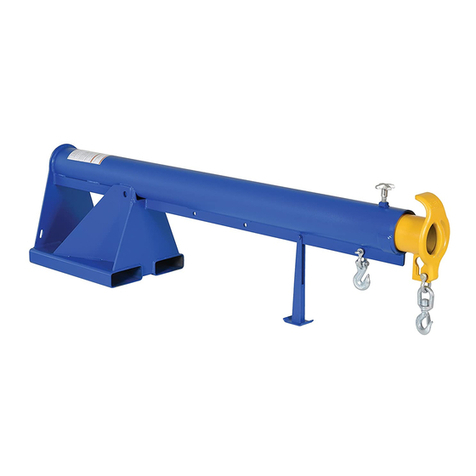
Vestil
Vestil LM-Series Use and maintenance manual

Harbor Freight Tools
Harbor Freight Tools PITTSBURGH 56617 Owner's manual & safety instructions
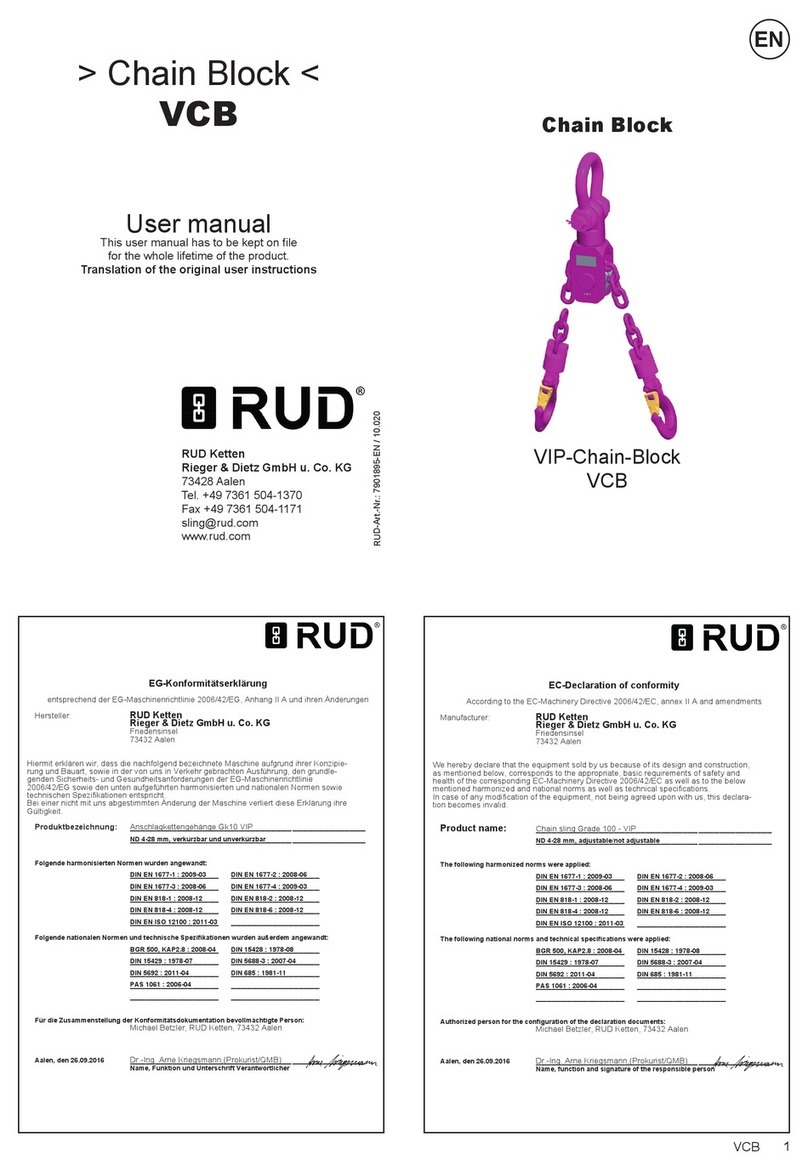
RUD
RUD VCB user manual
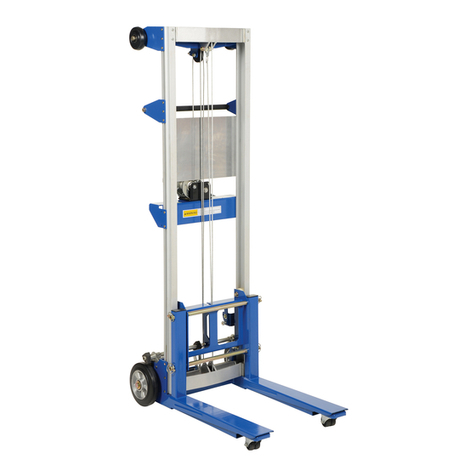
Vestil
Vestil A-LIFT-R instruction manual

Gude
Gude GHT 500 Translation of original operating instructions


